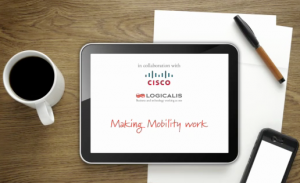Chris Gabriel takes a look behind the hype to assess the economics of BYOD and asks, "Is everyone doing it just as well as Cisco?”
Is everyone doing BYOD as well as Cisco?
BYOD is great, right? It saves on capital expenditure since employees actually buy the handsets and pay for the data plans, and it’s good for morale and productivity now that ‘mobility’ is part and parcel of corporate life.
The answer, it seems, is ‘It depends’.
There is no question that BYOD can deliver all those benefits and more. You only have to look at Cisco, where BYOD has enabled costs savings of somewhere between 17% and 22% and delivered on the ‘people’ side of the equation too. As Lance Perry, Cisco's vice president of IT, customer strategy and success, put it: “We don't pay for it, and our users are happier.”
But, it turns out – at least according to research from Aberdeen Group – that plenty of organisations are only getting it right on the people side, and getting it badly wrong on the economics front. Indeed, it found that on average, a company with 1000 mobile devices will see costs go up when adopting the BYOD approach.
But hang on, that can’t be right, can it? Well, I’ve alluded to it above, but to spell it out, BYOD is a balancing act – on the one side you have the people benefits, on the other the economics.
The point is, in organisations where BYOD has driven costs up, the balance is wrong. As Aberdeen analyst, Hyoun Park put it, "Organisations that simply say BYOD is about productivity and have completely ignored the cost structure are playing with a blank check.”
In my view, the likelihood is the balance is wrong because a vital element is missing – the mobility strategy. In fact, the survey we ran with Ovum 12 months ago tended to bear this out – some 50% of respondents worldwide claimed their BYOD activity went totally unmanaged by the IT department or anyone else.
A BYOD policy, of course, is a vital element of any mobility strategy – but only an element. Implementing a BYOD environment – one that lives up to its billing on both sides of the equation – demands a great deal more.
First and foremost, a mobility strategy must look at the bigger picture for both users and the business – it must look at both business needs and user outcomes. It must ask “How do we deliver a BYOD environment that enables productivity and a great user experience, and how do we balance that with a robust business case?”
In other words, yes, let’s give users the mobility experience they want, but let’s also ‘do the maths’.
A mobility strategy worth its salt will look at every aspect of BYOD – every outcome, every business need and every investment – up front, thereby enabling the development of a solution that strikes the right balance between outcomes and economics.
Those somewhat surprising figures from Aberdeen Group suggest that too few BYOD implementations have been planned and designed with such rigour – perhaps a focus only on capital cost savings and security, leaving far too many gaps from which unforeseen costs can emerge. And dealing with those gaps piecemeal, by retrofitting solutions, policies and processes is always going to be cost and time inefficient.
The answer then is “No. Everyone is not doing it as well as Cisco.”
However that doesn’t mean it can’t be done, provided BYOD is not treated as a standalone issue. Planned and implemented as one element of a comprehensive mobility strategy that strikes the right balance between people and business outcomes BYOD can absolutely deliver on its promise – provided IT takes the lead and retains control from day one.
Related BYOD resources:
BYOD in Schools – High Definition Education?
No BYOD Policy? Time to grasp the nettle

